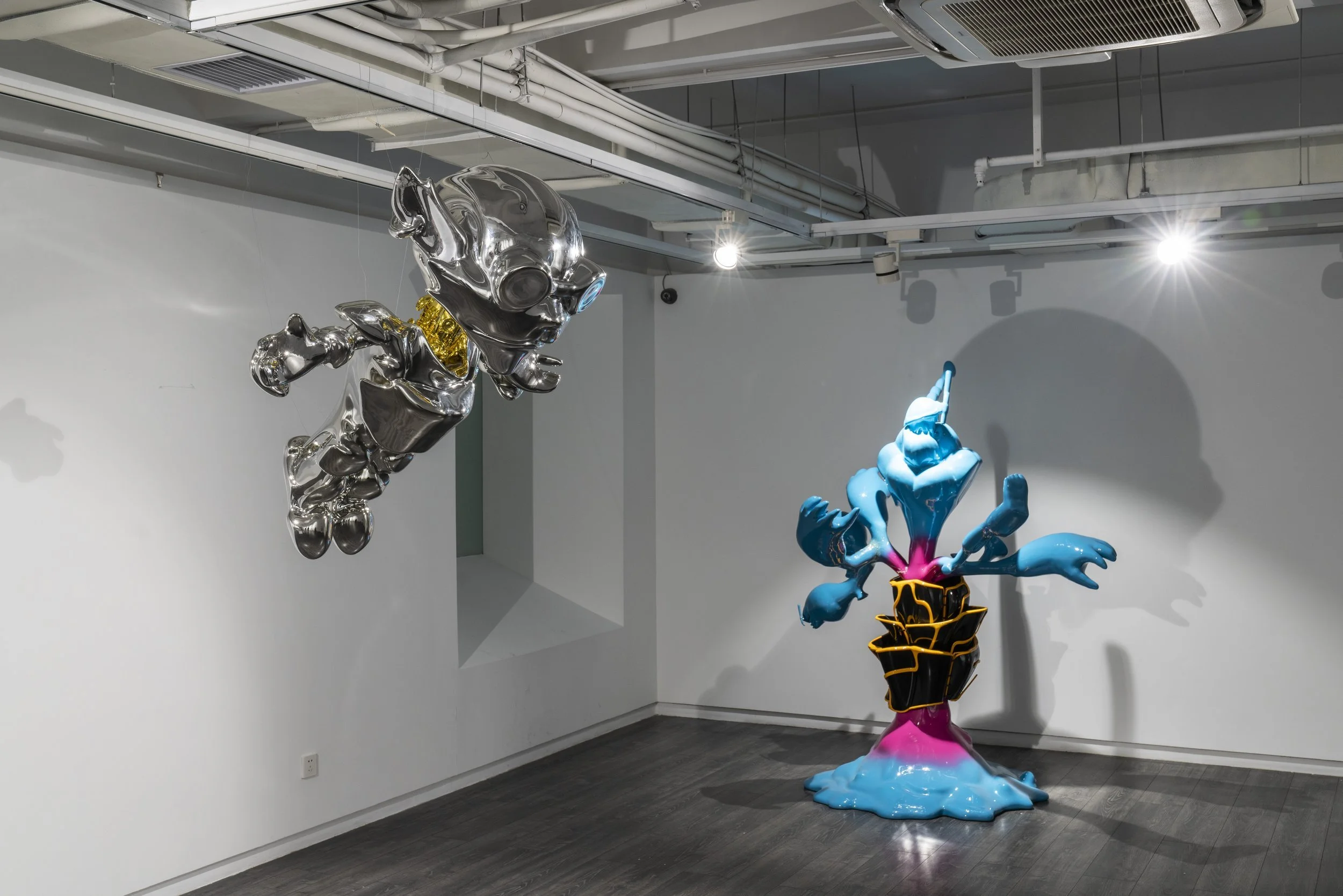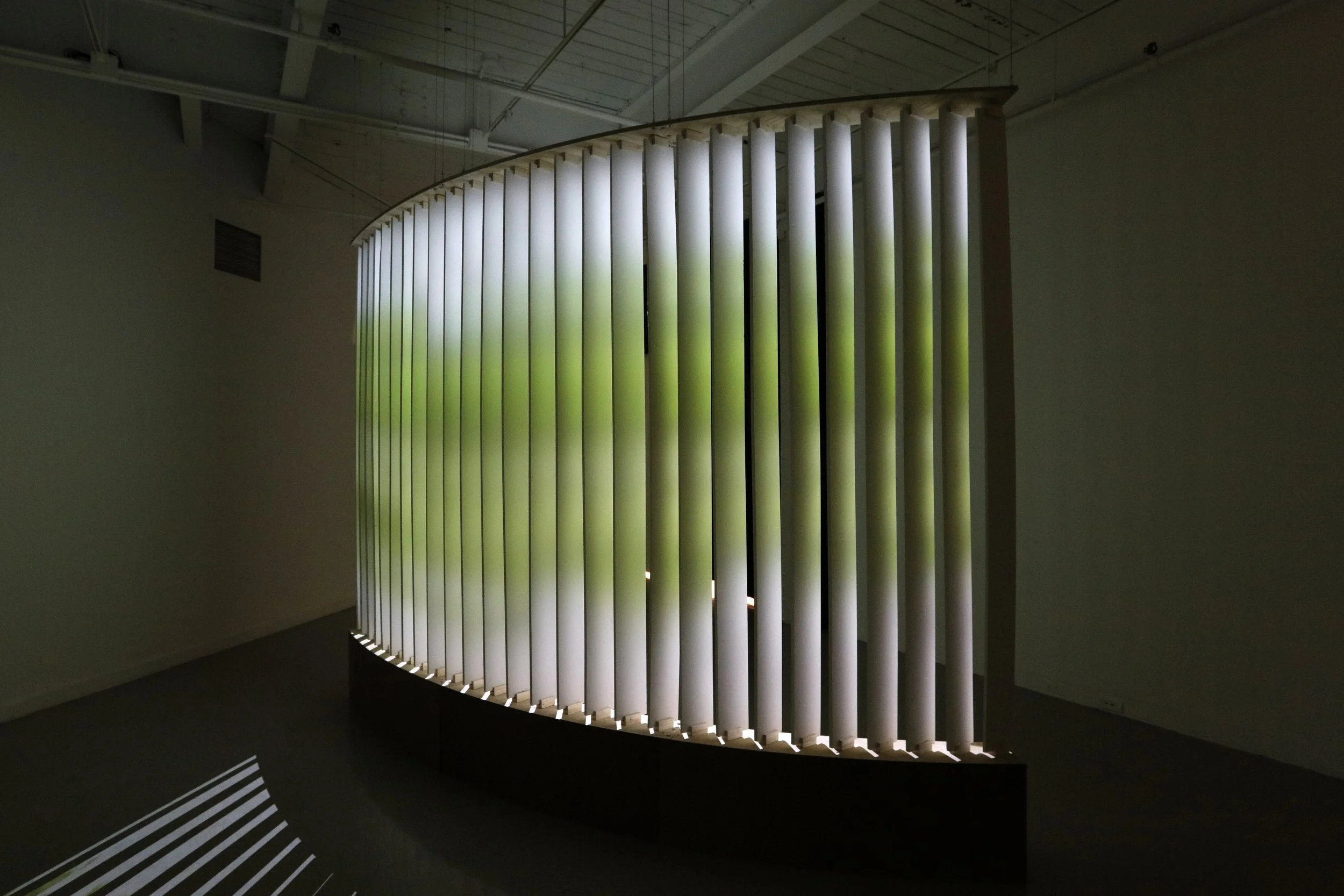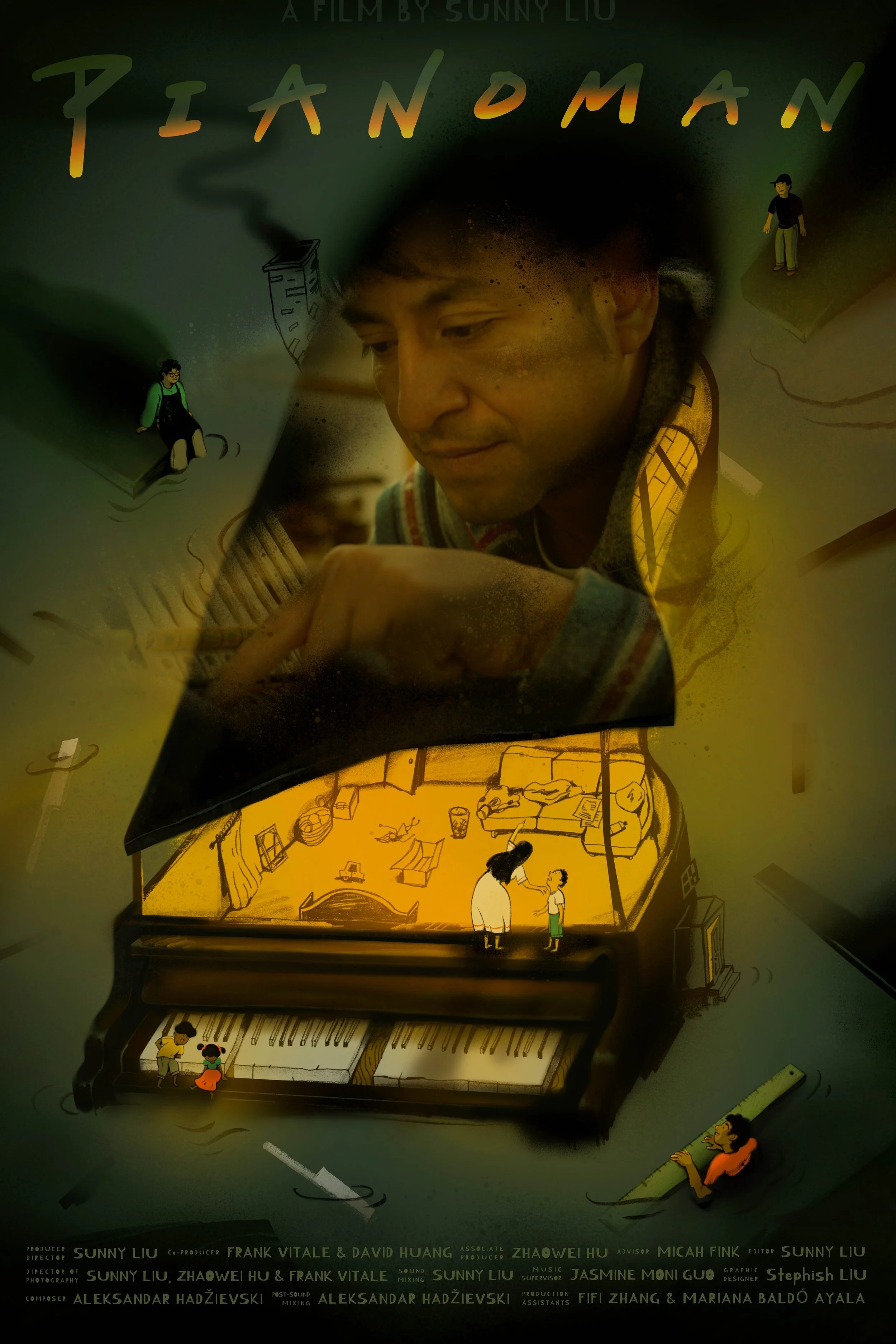10 Questions with Yun-Chin Wang - Raw2.2
Raw2.2 (Yun-Chin Wang) is a London-based multimedia artist delving into the realms of Asiatic identity, consciousness and technology. Often in the form of videos, music, or performance, her works are surreal confrontations on the incoherence of consciousness steeped deeply in techno-orientalism and introspection. Both eerie and ethereal, her storytelling provides a dreamscape illusion of the paradoxical nature of realities. After graduating from Central Saint Martins, Wang's exceptional work earned her a MullenLowe Nova Awards Nomination. Her works were also featured in prominent media outlets such as Numéro China and Clot Magazine, and all shed light on Wang's unique synthesis of identity and consciousness.
Raw2.2 (Yun-Chin Wang) - Portrait | Ph: by unnell (@zhuz1)
ARTIST STATEMENT
Hebe Wang, alias Raw2.2, builds a world around her psyche through surrealist videos, music and performances. In her series of works, dissociations and hallucinations are transmuted into hyperbolised, ethereal, and fractured narratives for viewers to navigate consciousness alongside her.
Using cyborgs as symbolic vessels, Wang navigates the intersection of the digital and physical realms. Her works, steeped in trauma and isolation, are profound confrontations with the incoherence of consciousness. Wang invites a dissection of vulnerability and raw emotions but also alludes to the discourse of technologized figures of the Asiatic women and their constant projection as an ornamental object.
Wang's cyborg characters are compartmentalizations of her personalities, creating a form of agency that is intentionally resistant to cyborgs as machines or the Asiatic woman as objects. In her adaptation of female cyborgs, the often machine-like, synthetic Asian woman is now full of emotions, soulful, and the literal essence of someone's non-linear mind. This introspective practice situates reality in an intriguing prospect—whether it's confined to our immediate surroundings or extends into the boundless realm of imagination.
Reflecting beliefs in the convergence of dream and reality, Wang's works exist in an absolute reality—a surreality. She follows Surrealist principles, describing her practice as 'finding solace through the darkness.'
Misery of An Abstract Dinner, Video, 2021 © Raw2.2 (Yun-Chin Wang)
INTERVIEW
First of all, introduce yourself to our readers. Who are you, and how did you develop into the artist you are today?
I try to tell a story about how surreal reality truly is. The human mind and the yellow woman, through cyborgs, are all tied together in a world-building project in the form of video, performance, online interaction and music. They all explore the longing for somewhere other than here.
Graduating from Central Saint Martins and earning a MullenLowe Nova Awards Nomination are significant achievements. How has your education and recognition shaped your artistic journey and the themes you explore?
Being in an art school, or any form of educational institution, is a safe cocoon, an imitation of the outside world. There is this freedom to try and fail, to experiment without fearing the weight of being seen. It's also a precious place to have peers that take time to analyse, critique and share ideas with. Many of my ideas advance through the friends I've become close with in school. In terms of the nomination, I remember crying to the judging panel because of how uncomfortable it was for me to present my vulnerable piece. Just like an institution, there's a formality in art that I find difficult for artists who are emotionally intertwined with their art.
Misery of An Abstract Dinner, Video, 2021 © Raw2.2 (Yun-Chin Wang)
You work across different mediums, such as videos, music, and performances. Could you share some insights into your creative process? How do you choose which medium best suits a specific project? And how do you go from the first idea to the final outcome?
I come up with a story first. Then I think about which senses I want to utilise when one engages with the story. One thing I consider is whether the story needs active or passive participation; this, in a way, decides whether the medium should be video or not. For example, my upcoming music project this year started off by wanting to convey the cyborg characters' stories using their 'voices'; hence, I picked the sonic medium.
Your work is described as "creating hyperbolised, ethereal, and fractured narratives" that invite viewers to navigate consciousness alongside you. How do you approach the process of translating dissociations and hallucinations into tangible artistic expressions?
I used to say I don't transcribe the effects of consciousness onto my works; I merely try to replicate what's going on in the mind. However, the more I sit with my own works, where I write and come up with each component almost in a meditative state, in a trance, I realise the act of linking is my artistic expression, between Asiatic female bodies as cyborgs, consciousness as the '3D' words, thoughts as characters, human mind as a distant world, in our reality where digital and tangible meld.
Surrealism holds a significant role in your work, and in your statement, you equal your practice to 'finding solace through the darkness.' How does Surrealism help you in this pursuit?
The essence of Surrealism, in my understanding, is the omnipresence of dreams, denouement of physical order, and embrace of the mind. We live in a world where words, images, and sounds are interchangeable as facts or fabrications. The core of reality is surreal; everything is chaotic, our minds are unknown, and others are even harder to know. The context of my practice is essentially about the exploration of my mind, using my emotions, memories, and experiences as a playground for world-building. Each cyborg character is a compartmentalised area of my mind; how do they interact, what stories to tell, and how unconstructed can a re-imagination be? In the Surrealist Manifesto, there is a list of 'Absolute Surrealism' performed by various artists and philosophers; I compare my practice to 'Surrealist when finding solace through darkness'. What I really want to say is, in this surreality that I've crafted, every character, every viewer, including myself, is trying to find solace within the darkness. As to what darkness is, it's not my part to define it—the surreal lies in the pas de trois of trying, finding, and within.
Can you elaborate on the symbolic significance of cyborgs in your art, particularly as vessels for navigating the intersection of the digital and physical realms?
The cyborg inside my practice isn't about technology but humanoid vessels that are malleable to be a personification of the psyche. When they don't need physicality to sustain life, they can be pure essences of my mind. When the characters are animated to interact with a video-taped me, the moving images on the screen become what reality is capable of. Is reality merely the world we operate in, or can technology and imagination truly extend it beyond?
Karmen Line, Video Series, 2021-Current © Raw2.2 (Yun-Chin Wang)
Karmen Line, Video Series, 2022-Current © Raw2.2 (Yun-Chin Wang)
Your works often reflect on Asiatic identity, consciousness, and technology. How do these themes intersect in your artistic exploration, and what insights do you hope viewers gain from engaging with your pieces?
The Asiatic identity is specifically talking about the yellow woman. Within the Western constructions of the yellow woman, the yellow woman is often hollowed out, synthetic, and refused a significance other than ornamental. In Ann Anlin Cheng's discourse, the yellow woman is invoked through so much orientalist representation that she becomes indistinguishable from an object. However, the cyborg bodies in my works are of major significance; they are someone's thoughts, equivalent to the brain; she operates, she directs, she controls. She is vivified through her representation of the mind despite presenting as a person turned into things. When I talk about the yellow woman, I see her, and I feel for her because I am her. Does that make sense? I feel less like an object when I compartmentalise my mind into tiny cyborg humanoids, so I feel like I have control.
Your art has been featured in prominent media outlets such as Numéro China and Clot Magazine. How do you perceive the role of media exposure in amplifying the discourse surrounding your unique synthesis of identity and consciousness?
There is a difference in being featured for the visual element and for the ideas within my work. The latter obviously amplifies the message by directly discussing such ideas. What's interesting is that when the media exposure is in print and purely for aesthetic digestion, my works are then in 2D, voided of time, and have the ability to transform. I find that interesting as the ability to evolve is so integral to my work, and that in the form of a snapshot, my works can sometimes be rendered to 'pretty, trendy images'. But that's fine for me. If someone decides they want to look up the actual work, there is a sense of exploration, too. And that in itself is more organic than any choreography I will ever implement in my works.
As a London-based artist, how does the cultural and artistic landscape of the city influence your creative vision and the stories you choose to tell through your art?
It has introduced me to a multitude of different personalities, which sparked my interest in the human mind. What is going on in someone's little bubble, that is their incoherent mind? I can never truly live as another, and sometimes, this fear propels me to create my works on the fractured minds. The process of thinking, from having a thought to voicing a thought, is it not but a process of organic to synthetic?
And lastly, where can our readers find your work next? Do you have any upcoming exhibitions or publications you would like to talk about?
I had just recovered from a major illness of a year and was holding onto a bottle of bubbling urges. I'm releasing the next part of my Rawborg Series starting in May; there is an online interactive webpage to explore the story and an accompanying EP throughout the year.
Artist’s Talk
Al-Tiba9 Interviews is a promotional platform for artists to articulate their vision and engage them with our diverse readership through a published art dialogue. The artists are interviewed by Mohamed Benhadj, the founder & curator of Al-Tiba9, to highlight their artistic careers and introduce them to the international contemporary art scene across our vast network of museums, galleries, art professionals, art dealers, collectors, and art lovers across the globe.


















